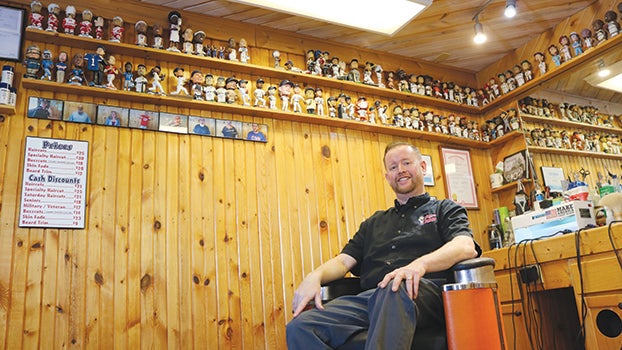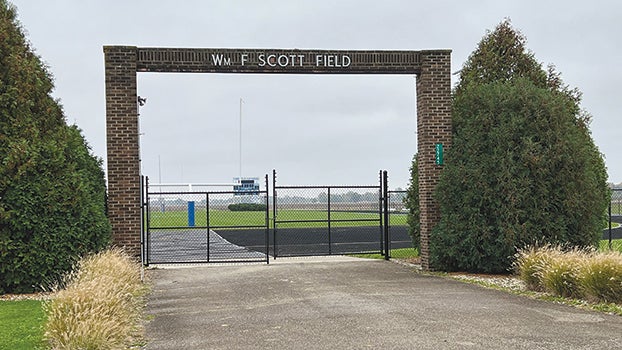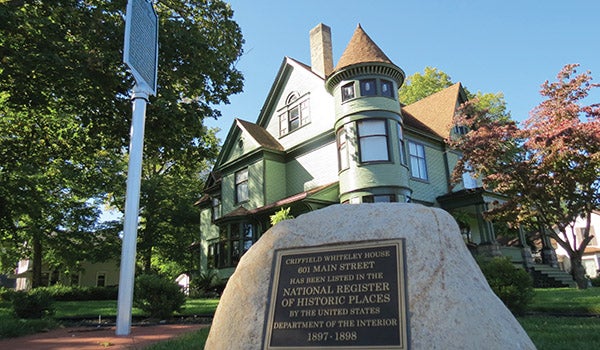Former nurse moves from hospital to the animal shelter
Published 1:24 pm Thursday, February 23, 2017
For more than 40 years, Sister Lakes’ Laurie Fleming dedicated herself to helping the sick and infirmed become healthy and able to stand on their own two feet again.
Although her career as a registered nurse is over, Fleming continues to care for those going through difficult times — only now she is helping them get back on their own four feet again.
Since November 2016, the former Lakeland executive has been writing the next chapter in her story of caring for others as a volunteer at the Berrien County Animal Shelter, located in Benton Harbor. Fleming offers her time to assist the shelter staff two to three times a week, helping give impounded dogs walks as well as helping socialize the animals through play.
Fleming, who owns one dog and two cats of her own at she and her husband, Raymond’s, cottage on Big Crooked Lake, was inspired to volunteer after touring the new shelter with Director Val Grimes.
Fleming and her husband visited the facility to donate some towels, and, after hearing that the shelter was in need of additional kitty litter, she rushed back shortly thereafter to deliver some.
“I am not sure what clicked,” Fleming said. “I am not sure if it was her [Grimes’] enthusiasm or the shelter’s environment, but I thought this was a place where I really wanted to volunteer.”
She decided to start getting even more involved with the animals directly, so she took a volunteering course from the shelter’s volunteer coordinator. After learning some of the procedures and advice on reading canine behavior, Fleming was ready to get started.
Fleming works exclusively with the dogs inside the kennel by taking them out for walks around the shelter’s track.
She said keeping up with the animals following their outburst of energy from being able to roam again can provide quite a challenge at first, though after a few minutes the dogs tend to settle down, allowing Fleming a chance to learn more about each dog’s personality as they peacefully amble about the field.
Predictably, after walking with each dog a few times, they tend to yelp and scramble around their cages immediately when they see her, wanting to be the first one to spend some quality time outside with their new companion, Fleming said.
“You do get a bit dirty at the end of the day,” she said. “Dogs do like to jump, after all.”
Although she mainly worked with smaller breeds such as Chihuahuas when she first started, these days Fleming also pitches in with the larger dogs, who are often just as friendly and personable, she said.
Although she has always been a pet owner, working with so many different animals on a regular basis has helped Fleming be able to better read and understand canine behavior. For example, watching how a dog sways its tail is often a great indicator of how it feels. She has also picked up a number of useful tips along the way, such as using car keys to get dogs to follow along, as many strays think they are going on a car ride.
Perhaps the most rewarding part of Fleming’s day is when she is able to spend some time with the dogs in the shelter’s playroom, where she can play fetch with the animals, feed them treats or even read to them, she said. Through play, she and other volunteers are often able to help socialize strays who have become timid around people, which goes a long way in making the animals more adoptable, Fleming said.
“It is very rewarding to see the progress the dogs make, from when they first are brought in to before they are adopted,” she said.
Her time at the shelter has also allowed her to form bonds with her fellow humans working there. Although she and her fellow volunteers rarely work alongside each other due to their schedules, through the various notes they leave each other (explaining things like how much more friendly the new dog has become or about how one of the animals is feeling under the weather that day), Fleming said she feels like she is learning more about the personalities of the shelter’s bipedal population as well.
“I feel like there is this unspoken friendship between all of us, even if we just meet each other in passing,” she said.
While she and her husband had to set a new house rule — that she could not bring home any new pets from the shelter — she has found it surprisingly easy to resist the urge to adopt every new arrival, she said. In fact, she is elated to come in and learn the animals she had been working with found new homes, like when she learned that four of the five Chihuahuas she had played with and walked were adopted just days apart from each other, she said.
From Fleming’s perspective, the shelter is just a depot for lost and wayward animals, a brief stopping point before they continue their journey to their final destination, the home of their forever family. Fleming is but a small character in a few chapters of each dog’s story — a role she said she is more than happy to play.
“It is a great feeling, because I know the owners are getting a really good dog,” she said. “The only time I feel sad is when I think about the dogs here who have not been adopted yet.”
As she continues to fall more and more in love with volunteering, Fleming said she hopes to begin working with the shelter’s cats as well.
She encourages anyone who is interested in giving back to the community to consider working at their local shelter. Volunteering with animals fills up one’s emotional piggy bank with a different kind of currency than working with people or spending time with family, she said.
“You should ask for a tour of your local shelter,” she said. “You never know what could happen.”







